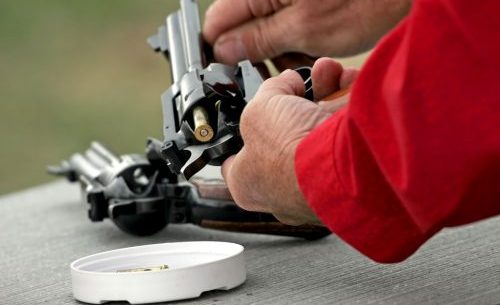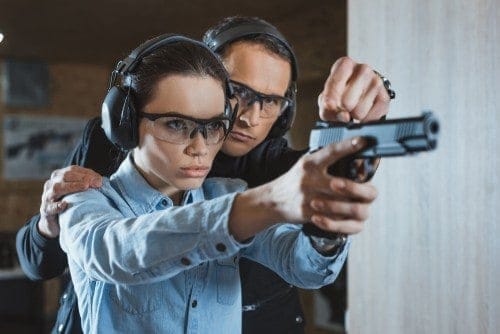Module 1 Overview
Our online handgun training course is broken down into four distinct modules:Module 1: Texas Gun Laws
Module 2: Gun Safety
Module 3: Non-Violent Dispute Resolution
Module 4: Gun Storage
Each module has its place in providing a well-rounded education of handguns, proper etiquette and using them in real life. Following our modules in the order that they are presented is key to ensuring you finish this online handgun training course with the proper understanding you need to be a responsible handgun owner. All the course content is provided online. As you
Here we will focus on Module 1: Texas Gun Laws. In this first module in our online handgun

Module 1: Texas Gun Laws
This module can be broken down into three sections:
Section 1: Constitutional Framework – the primary legal documents that define the rights of an individual and the authority of government over those rights. The U.S. Supreme Court is the legal authority to explain and interpret constitutional provisions.
These provisions are written as case laws. As our 2nd Amendment reads:
“A well-regulated Militia, being necessary to the security of a free state, the right of a people to keep and bear Arms shall not be infringed.”

This 2nd Amendment adopted on December 15, 1791, is the key provision directed to ownership of firearms. This amendment protects the right of the people to keep and bear arms. The state of Texas also has a framework in place to protect the individual’s right to bear arms.
As it notes:
“The right of a citizen to keep and bear arms in defense of his home, person, or property, or in aid of the civil power, when thereunto legally summoned, shall never be prohibited; but nothing herein contained shall prevent the legislature from regulating the carrying of weapons.”
This 2nd Amendment adopted on December 15, 1791, is the key provision directed to ownership of firearms. This amendment protects the right of the people to keep and bear arms. The state of Texas also has a framework in place to protect the individual’s right to bear arms.
As it notes:
“The right of a citizen to keep and bear arms in defense of his home, person, or property, or in aid of the civil power, when thereunto legally summoned, shall never be prohibited; but nothing herein contained shall prevent the legislature from regulating the carrying of weapons.”

This framework
In order to get a better grasp of Texas Gun
- Assault: a person commits an offense if the person intentionally or knowingly causes bodily injury,
threatens another with bodily injury or causes physical contact with another when they know it will be
perceived by the other as offensive. - Imminent danger:
danger that is pressing, urgent or immediate. - Non-Deadly force: any non-consensual offensive touching of another person with the intent to harm.
- Deadly force: force likely or intended to cause death or serious bodily harm.
- Self-defense: it’s the government’s responsibility to protect its citizens from harm but the state law
recognizes that a citizen may have to act in self-defense where a threat is imminent.
Section 2: Provisions in the Law a.k.a. Stand Your Ground Law
As a License Carrying Citizen you don’t have any additional rights as a citizen in the event of a shooting so it’s important to know your provisions in the law.
You have the right to stand your ground and not retreat:
• You had a legal right to be present
• Not committing a criminal act
• Can’t have provoked the person who used deadly force
Defense of home, vehicle or business allows you to defend yourself or another in the case of a threat.
Actions taken with firearms that are considered legal actions of force:
• Displaying or flashing a firearm with intent to harm another
• Brandishing or threatening
• Pointing a firearm
• Firing or discharging a firearm
• Committing a battery with a firearm

Section 3: Texas Penal Codes
These codes are extensive and very important to you to know as a handgun owner. Be sure to study
these intently when you take our online handgun training course.
In Summary
As you can discover from our brief overview of the first module about the Texas Gun Laws there is a lot
to learn about these laws. We are confident that by taking our course you will get a detailed overview of
each distinct portion of gun laws in the state of Texas. Sign up today to get started!
